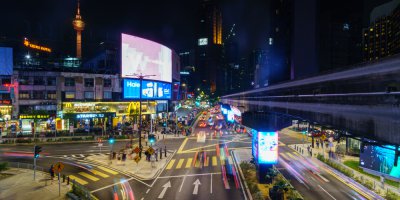
China’s “new retail” model might be spreading like wildfire in the country, but it doesn’t mean it’ll work overseas. Source: Shutterstock
Why ‘new retail’ only works in China
TWO years ago, Alibaba founder Jack Ma unveiled his vision of “new retail” – a merger between online and offline retail, as well as logistics.
Today, many so-called “traditional retail” stores – including mom and pop stores – are adopting this model.
However, experts believe that while the “new retail” model is popular in China, it might prove to be a hard sell for retailers outside the country.
What is “new retail”?
Until today, more than 70 percent of retail in China still happens offline, according to Statista. Aiming to bridge the gap between offline and online, Jack Ma’s vision of new retail is broken down into four parts.
Firstly, it’s transforming the grocery shopping experience. Not unlike Amazon’s efforts with Amazon Go, customers scan and pay items with their phone.
A slight different from its western counterpart, though, is the in-store chefs that cook’s a shopper’s groceries on demand, and deliveries that are made in under half an hour from its initial order.
Another example is the automobile vending machines, where users can choose and test drive the cars they want without speaking to a salesperson until the final purchase.
For the mom and pop stores, Alibaba is offering business owners an inventory management system that is linked to a central warehousing and logistics system.
The app also churns out analytics, to help predict customer demands, which in turns inform the storekeeper of what needs replenishing and when.
Finally, the company aims to outfits retailers in malls with “virtual shelves” and “magic mirrors”. “Virtual Shelves” ensure that customers can order the items they want, to be delivered, if the store doesn’t have the items in stock.
“Magic Mirrors” allow users to try out a new makeup look with the help of AR. Users can then buy the items from a vending machine if they fancy the virtual makeover.
The state of new retail in China
It’s not just Alibaba who’s pushing for new retail either. Rivals Tencent and JD are also rolling out their own iterations of next-generation retail.
Tencent powers its “Smart+Retail” initiatives with big data, cloud computing, and AI technology. JD, on the other hand, rolls out a similar strategy called “Unbounded Retail”.
Recently, Starbucks made headlines in China when it teamed up for a “new retail” partnership with Alibaba for coffee delivery, in response to the competition from local startup Luckin Coffee.
In China, large retailers are quickly being challenged by small retailers with a more innovative approach to retail.
The new retail model is effective because it puts customers first. Until recently, the country’s shopping experience had been quite traditional. While market demand was high for an omnichannel mobile-friendly experience, brick and mortar didn’t really change.
In an ideal setting, new retail results in lower costs for customer acquisition and fulfillment, while gaining higher retention rate and average spend
However, it is in part due to the monopoly of the retail market, by essentially the three major companies mentioned above, that drove the rapid adoption. The power Alibaba, JD, and Tencent has combined over the retail space, nudges offline merchants to join up with their platforms.
Moving out of China
The growth of the e-commerce market in China is slowing down. So where is the opportunity for China?
For many Chinese companies, Southeast Asia seems to be the answer. However, if China is looking to implement new retail in this region, it might still be too early.
In Southeast Asia, online retail – while growing – makes up just around 5 percent, reported Bloomberg. In fact, new retail can be a way that online retailers tap into the larger market of offline purchases.
The culture of shopping is a leisure activity, coupled with the preference to touch and feel and product before making a purchase, is partly the reason for this a slower growth in Southeast Asia.
As commented by David Jou, founder and CEO at Pomelo Fashion, in a report by Tech in Asia, “There is no one-size-fits-all in new retail. Every category, geography, and customer segment have different needs and requires a different model. Finding the right one for your business is the key.”
New retail promises a seamless omnichannel experience, where consumers are engaged in a dynamic retail environment. However, businesses need to remember to cater to the customer’s needs, instead of adopting any flashy new technology.
Most importantly, businesses need to focus on developing solutions that not only fit their customer’s needs but also be scalable. Instead of being tied down to a model, a channel agnostic approach is key.
READ MORE
- Ethical AI: The renewed importance of safeguarding data and customer privacy in Generative AI applications
- How Japan balances AI-driven opportunities with cybersecurity needs
- Deploying SASE: Benchmarking your approach
- Insurance everywhere all at once: the digital transformation of the APAC insurance industry
- Google parent Alphabet eyes HubSpot: A potential acquisition shaping the future of CRM






